How to Make Easy Money Email Marketing Quick Your Minimum Wage
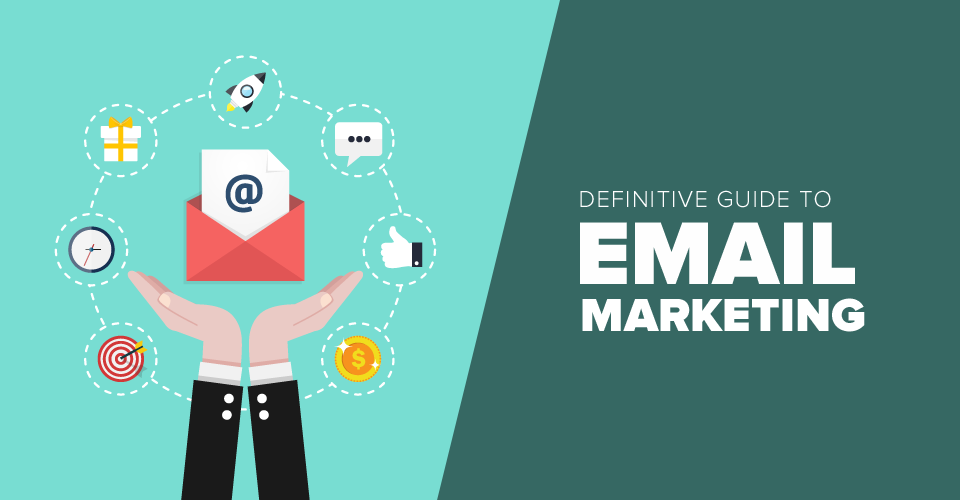
What Is Email Marketing?
Email marketing is a type of direct marketing that uses personalized emails to educate your email list about your product or services. It can also be used to convince your email list to take a specific action like making a purchase, booking a demo, signing up for a trial or registering for an event.
Let's dive into the most comprehensive guide to email marketing on the entire internet.
- Why Email Marketing is Important
- Email Marketing Glossary
- How Email Marketing Works
- Growing Your Email List
- How to Create an Optin Form that Converts
- What Email Marketing Service is Best?
- Segmenting Your Email List
- Improving Email Open Rates
- Automating Your Email Marketing with Autoresponders
- FAQs (Frequently Asked Questions)
It is a highly effective digital marketing strategy. Effective email marketing convert prospects into customers, and turns one-time buyers into repeat customers and raving fans.
Email marketing is the most direct and effective way of connecting with your leads, nurturing them, and turning them into customers, consistently winning out over all other marketing channels.
In this guide, we'll walk you through the entire process of setting up your email marketing funnel so that you can acquire leads and generate sales, 24/7.
This guide is for those who're ready to commit to email marketing. If you're unsure, you may want to read our guide on why you need to build an email list RIGHT NOW!
By using this definitive guide to email marketing, you'll understand:
- How to build an email list full of targeted leads and buyers.
- How to optimize your emails for the highest open rates and click-through rates (CTR).
- How to automate the process of nurturing your leads and turning prospects into customers.
Sound good?
Why Email Marketing is Important
We've covered the biggest question, what is email marketing, but haven't gotten into why email marketing is so very important for your business. Let's talk about that now.
Despite the rise of social media and unsolicited spam email (which is never a good marketing strategy, by the way), email remains the most effective way to nurture leads and boost customer loyalty.
There are many reasons you should make email marketing one of your top priorities, but here are the top 3:
1. Email is the #1 communication channel. Did you know that at least 99% of consumers check their email on a daily basis? That can't be said of any other communication channel.
2. You own your list. On any social media platform, your account (along with all your fans and posts) could be suspended or deleted at any time, for any reason, without notice. However, you own your email list. No one can take those leads away from you.
3. Email just converts better. People who buy products marketed through email spend 138% more than those who do not receive email offers. In fact, email marketing has an ROI (returns on investment) of 4400%. That's huge! And if you are wondering if social media converts even better, think again: the average order value of an email is at least three times higher than that of social media.
Email is simply the best way to make sales online. Now that you know the importance of email marketing, let's learn the best ways to go about it.
Email Marketing Glossary
Email marketing has its own vocabulary that can sound confusing. But don't worry! We've included a simple email marketing glossary to help you learn the key terms so you can plan your email marketing strategy easily.
Subscriber: anyone who has signed up or opted in to receive email from you
Opt in (verb): choosing to receive marketing emails from a person, brand, or business
Optin (noun): an incentive for people to subscribe to your list; also called a lead magnet
List: a collection of email subscribers; a list may contain multiple groups or segments
Group: a category of subscribers within a list set up by the brand or business
Segment: a category of subscribers created automatically based on their subscription activity, such as timezone, engagement rate, purchase history, and more
Automation: a series of pre-written emails that go out automatically in response to a subscriber's actions, such as an abandoned cart automation; also known as email sequence or autoresponder
Broadcast: a one-time message you send to groups or segments on your list; also known as newsletters, announcements, promotion
Optin Form: a signup form where visitors can join your email list; optin forms can be popups, inline, fullscreen, slider, floating and more
Landing Page: a standalone page containing an optin form people can use to opt into your email list
How Email Marketing Works
Wondering how to get started with email marketing? Email marketing is made up of several moving pieces, but that doesn't mean it has to be complicated. Here's how it breaks down…
1. Start With Your List: The bottom line is that you can't send out email marketing campaigns if you have no one to send them to. And the other thing to remember is that email marketing won't work if you don't havethe right people on your list.
That means you need to capture leads to grow your email list with your target audience. For that, there's no better tool than OptinMonster:
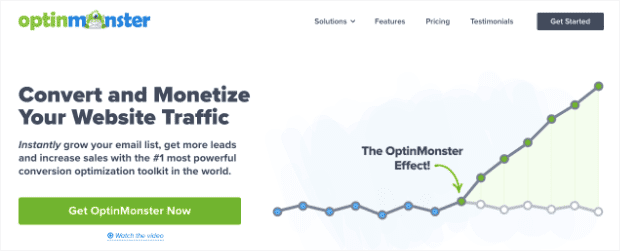
OptinMonster is the world's #1 lead generation software. We empower businesses to create stunning optin campaigns in a matter of minutes with zero coding skills required.
Then, using our highly advanced targeting rules, you can display these campaigns to the right people at just the right time in their customer journey.
As a result, you can drastically grow your list with quality leads and see huge increases in your company's profits. Plus, OptinMonster integrates with over 30 of the most popular email service providers.
BONUS: Done-For-You Campaign Setup ($297 value) Our conversion experts will design 1 free campaign for you to get maximum results – absolutely FREE! Click here to get started →
This leads us to our next step…
2. Add an Email Service Provider: An email service provider (ESP) lets you segment your audience, organize your list, and distribute email campaigns to your audience. You can also track the results to improve future campaigns.
A good ESP should integrate with your other marketing tools so you can turn everything on autopilot as you grow your leads.
There are a ton of email service providers out there, but we take the guesswork out and make it really easy to choose the right one for you and your goals. A big later in this guide, we'll list out our favorite ESPs that you can choose from.
After those two steps, it's just a matter of refining your lists and your messaging so you're reaching your audience and really connecting with them. Plus, you'll be able to set up some automation in your email service which will make things much easier for you.
Ready to jump in? Let do it!
Growing Your Email List
What most people do when they want to build an email list is to put an optin form on their website and hope that people sign up. Unfortunately, this strategy usually doesn't work very well.
To grow your email list, you need to attract people with a compelling offer. You need a lead magnet.
What is a Lead Magnet?
A lead magnet (a.k.a. an optin bribe) is something awesome that you give away for free in exchange for an email address. It doesn't have to cost you anything to create; most lead magnets are digital materials like PDFs, MP3 audio files, or videos that you can create yourself at minimal or no cost.

It can be absolutely anything you want, so long as it provides value to your visitors for free.
Some popular lead magnet examples are:
- ebooks
- A cheat sheet of tips or resources
- White papers or case studies
- A webinar
- Free trials or samples
- A free quote or consultation
- Quizzes or a self-assessment
- A coupon
The possibilities are endless!
For even more lead magnet ideas, check out our list of lead magnet ideas to grow your email list.
What Makes a Good Lead Magnet?
You already know that a lead magnet needs to provide value for free. But if you want your lead magnet to be highly effective, here are 5 criteria for you to consider:
1. Easily consumed: Lead magnets are only effective when the audience uses them, so if you deliver a 300-page manifesto, you won't gain traction.
2. Actionable: Lead magnets need to provide an actionable tool, skillset, or useful information that your audience can apply.
3. Creates noticeable improvement: People continue to buy products and services if they work well. Your lead magnet will become successful if it's as valuable as your products and services.
4. Relevant: If you've done your homework about your prospects, you'll have no trouble coming up with a lead magnet subject that solves problems.
5. Immediately available: People love instant gratification, so give it to them right then and there. Check out 4 Ways to Deliver a Lead Magnet to see how easy it is to get your lead magnet out there using OptinMonster.
Let's take a look at a few of the best email marketing lead magnet examples from real-life campaigns.
At OptinMonster, we share a list of 12 proven strategies for converting abandoning visitors into subscribers.
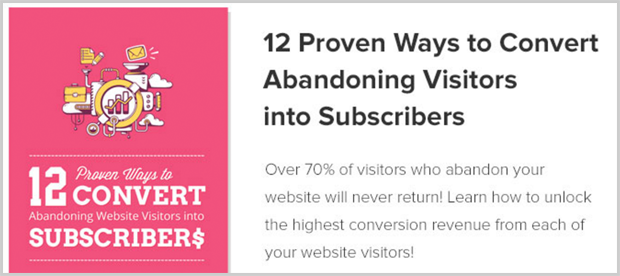
Syed Balkhi offers a list of tools and resources for growing a small business.
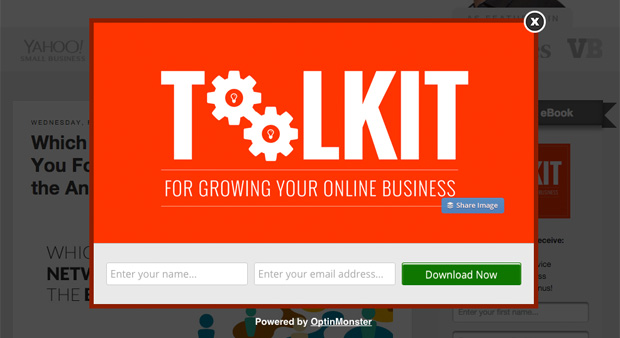
Here's another example of a lead magnet we used as a content upgrade to a specific blog post.
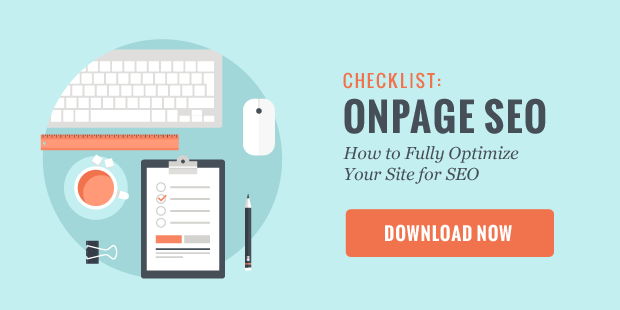
Now that you know what a lead magnet is and know how to create a highly-effective one, you'll need to create your optin form.
How to Create an Optin Form that Converts
The purpose of your optin form is to convey the big benefit of your lead magnet, so your website visitors subscribe to your email newsletters in exchange for getting the lead magnet.
To create an optin form that converts, it needs to have the following components:
1. Enticing headline: Make sure your headline clearly describes the big benefit of your lead magnet
2. Helpful description: Is your description brief, clear and to the point? Use bullet points to help the reader's eye quickly scan what they will get.
3. Attractive visuals: Include an image of the lead magnet if you can (like a mockup of your eBook). A photo of a person looking towards the optin form is also a great way to boost conversions. We've got a great list of visual content creation tools that can help you create amazing visuals.
4. Simple form: Don't try to ask for more than a first name and email address. Asking for too much information too soon will kill your conversions.
5. Compelling subscribe button: Make sure to use a contrasting color for your subscribe button, so that it really pops out on the page. Also, use non-generic email copy that compels people to click right away ("Send me the 7 steps!").
For even more tips on creating a high-converting optin form, check out our checklist for creating the ultimate optin form.
Once you've created your optin form, you'll need to install it on your site. There are 14 high-converting places to put your optin form:
- Splash page
- Welcome gate
- Floating bar
- Your site's header
- Blog archive page
- Within your blog posts
- Your sidebar
- In a timed lightbox popup
- In a scroll box
- Your footer
- Your About page
- Resource pages
- On a designated sign-up page
- In an exit-intent® popup
One of these is absolutely mandatory if you want to get as many subscribers as possible. That's the exit-intent® popup.
An exit-intent® popup shows up at the precise moment the user is about to leave your website. This popup doesn't interrupt the reading experience and only triggers when the user is leaving. This is the perfect time for asking them to subscribe because likely they've read your content and found your site helpful.

Using an exit popup works amazingly well, and in fact, our customers consistently see significant results using exit-intent. For example, Neil Strauss was able to increase conversions 125% with exit intent!
To learn more about exit-intent® popups, read our post on 40 Exit Popup Hacks That Will Grow Your Subscribers and Revenue.
Also, check out our gallery to see real-life exit-intent® popup examples.
What Email Marketing Service Is Best?
Before you email anyone, you need 2 things:
- Their permission
- A business email set up
If you started with an optin, you got that permission, so hooray! If you didn't use an optin, we don't recommend sending marketing emails to them unless you have their permission.
You risk them flagging your emails as spam. So not only will they not buy from you, but you can also face negative consequences.
Instead, you can use a tool like OptinMonster to create smarter optin forms. You can collect leads and subscribers who want to get your marketing emails.
Then, you need to select an email service provider. These providers give you the right infrastructure to send broadcasts and bulk business emails.
If you send bulk emails without this, it will be flagged as spam. Your subscribers won't receive your emails, and what's worse is that your regular emails to your team and clients will also be affected.
That means you won't be able to email clients as consistently as you should be to get the highest conversions/sales as possible.
Email service providers handle all the formalities and expensive technicalities involved. All you need to do is sign up and use their service.
Here are the best email marketing services that we recommend:
1. Constant Contact
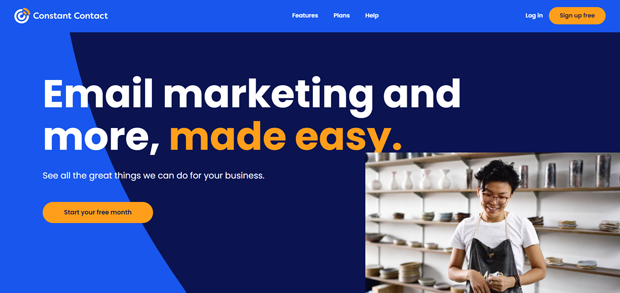
Constant Contact is one of the largest and best email marketing platforms in the world. They allow you to manage your subscribers and create professional email designs with templates and drag-and-drop editing tools.
You can also send automated emails to new subscribers using Constant Contact Lists + OptinMonster and track their performance.
You can try ConstantContact for free for 60 days. After that plans start at $20/month.
WPBeginner rates ConstantContact the best email marketing service. And if you get started with Constant Contact, you may be interested in the following article: How to Create a Constant Contact Popup for WordPress.
That resource will have everything you need to grow your Constant Contact email list.
2. Sendinblue
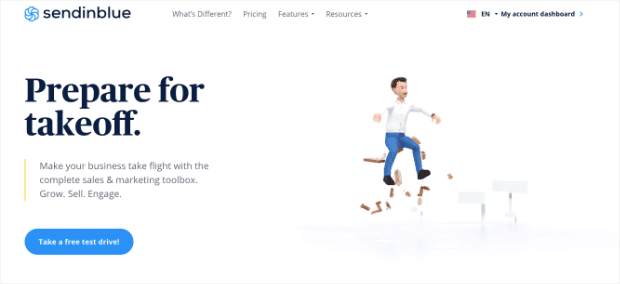
Sendinblue is not only a complete email marketing software for businesses, but also an SMS marketing software. And it's all in an easy-to-use marketing platform with drag and drop tools you can use to create highly-engaging emails, build automated workflows, and segment users.
You can send up to 300 emails per day for free with Sendinblue's branding. Paid plans start at $25/month and you can add on SMS for an additional cost that's based on your sending needs.
Want to improve your email marketing efforts? Check out this post on how to collect phone numbers using popups on your website.
3. HubSpot
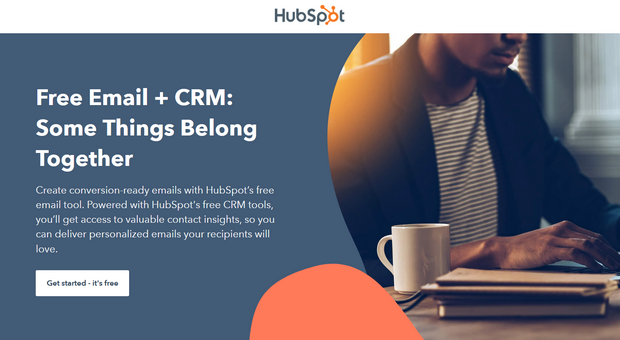
HubSpot is known for its CRM platform, but they also offer powerful email marketing software for small businesses. With the drag and drop editor and ready-made templates, you can easily create beautiful emails without the help of a designer. The software also comes with personalization features, A/B testing, and more.
You can send up to 2,000 emails per month for free with HubSpot. If you want to send more emails and remove HubSpot branding, you can upgrade to a premium plan starting at $45 per month.
4. Drip
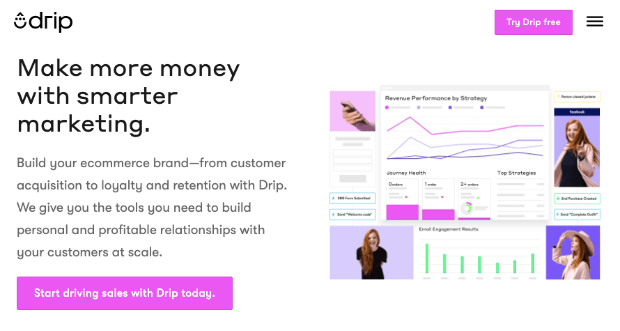
Drip is a marketing automation tool that allows users to create complex email automation workflows and conditional statements within email messaging. Campaigns, workflows, and triggers are well-organized and Drip is as simple or as complex as you need it to be. Creating lists and nurturing leads is even easier using Drip + OptinMonster.
Drip plans start with Basic at $49/month for up to 2,500 subscribers and Pro at $99/month up to 5,000 subscribers, both with a 14-day trial period. Enterprise users (5,000+ subscribers) need to get a quote.
5. ConvertKit
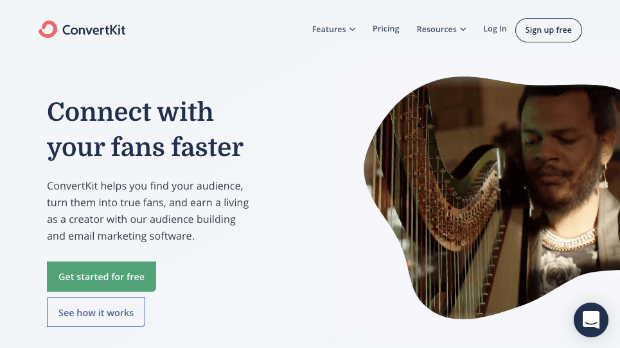
ConvertKit is an excellent choice if you are just starting out but you know that you are going to need some advanced features in the future, such as complex autoresponders (which you can do quite easily using ConvertKit Tags + OptinMonster). It's kind of like a CRM tool, without the heavy price tag.
ConvertKit is targeted for professional bloggers, authors, and speakers.
Pricing starts at $29/month for up to 1,000 subscribers and goes up incrementally from there.
Some users have asked what the difference is between OptinMonster and ConvertKit and why they need both. For more information, check out this post on OptinMonster vs. ConvertKit and which is best to grow your list.
6. Mailchimp

Mailchimp is a popular email marketing software. It is great for people who are just starting out, as it is easy to set up and it provides an intuitive user interface. You can also add new subscribers to specific segments using Mailchimp Groups + OptinMonster.
Mailchimp has a free plan for up to 2,000 subscribers making it the best free email marketing service.
However, if you want to use autoresponders or any other powerful feature, then you will have to switch to a paid plan. Paid plans start as low as $10/month and can go up to $30 for 2,500 subscribers. The bigger your list size, the more you're going to pay.
7. MailerLite
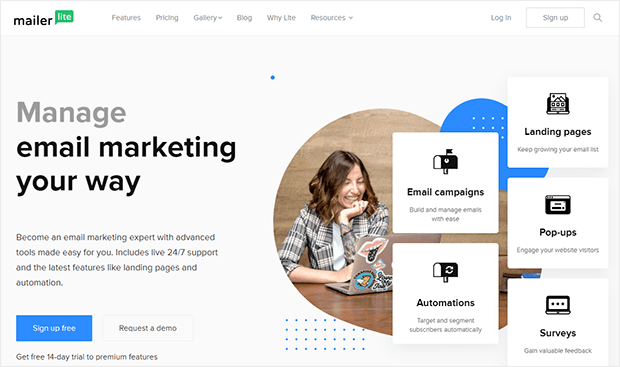
MailerLite allows you to create responsive emails and autoresponders with A/B testing capability built in. You can also send targeted emails to specific subscribers.
You can get started for free for a list size of up to 1,000 subscribers.
Besides the providers listed above, you can also look into ActiveCampaign or HubSpot, which is a full-fledged suite of marketing tools.
Once you have your optin form and your email marketing service in place, you are ready to start building your email list and making sales!
Segmenting Your Email List
Most marketing experts will tell you to build an email list. But what they don't tell you is that your email list will not be as effective without proper segmentation.
What is Email List Segmentation?
Email list segmentation is the process of breaking your subscribers into smaller groups based on specific criteria so that you can send them more personalized and relevant emails.
Rather than blasting every email to your entire email list, segmentation lets you send certain emails only to those subscribers you think will be the most interested in that content, resulting in higher conversions.
Why Segment Your Email Marketing List?
Segmenting your list is proven to increase your email open rates, boost your click-through rates, and decrease your unsubscribe rates. That's why smart email marketers use segmentation to drastically improve the effectiveness of their email campaigns.
Once you've "tagged" your subscribers into different segments, you'll be able to send really powerful autoresponders, a series of emails that get sent out automatically based on certain conditions, that you can use to nurture your leads and make sales. We'll talk more about autoresponders in the section on automation.
Segments make it so much easier to know what subject lines and messages to write that will entice the users to open and engage with your email campaigns.
The goal with segmentation should be to find out how did the user get on your email list in the first place?
Did they purchase a product? Visit a specific page? Download a specific lead magnet?
There are many different ways to slice and dice your list into segments. Here are a few ways to get you started:
- New subscribers: send new subscribers a welcome email or a welcome series.
- Preferences: subscribers who want to hear about blog posts vs. those who only want sale notifications.
- Interests: subscribers who like classical music vs. those who like pop.
- Location: notify subscribers who live in the area about your local event.
- Open rate: reward your more engaged subscribers with a special offer just for them.
- Inactivity: remind subscribers who haven't engaged for a while of the next step you want them to take.
- Lead magnet: send targeted emails based on the topic of the lead magnet that they opted-in for.
- Shopping Cart Abandonment: remind subscribers who put items in their cart that they haven't checked out yet.
These ideas just scratch the surface of what you can do with email list segmentation. For even more ideas, check out 50 Smart Ways to Segment Your Email List Like a Pro.
Pro Tip:Contact forms are an easy way to collect info from your leads that can then be used to create more targeted messaging. Check out our pick for the best form plugin (WordPress) and find out how to make your email marketing really shine!
Improving Your Email Open Rates
This section is super important because even with all of the hard work you've done to grow your email list and segment it, you won't benefit from any of it unless your emails actually get opened.
There are several factors that play a role in whether or not your emails get opened. Let's explore each of them.
1. Avoid Spam Filters
Probably the most obvious problem is when your email gets sent to the subscriber's spam folder. Since you've already gotten permission to send emails, and you've chosen one of our recommended email marketing providers, you're off to a great start.
Here are some email marketing best practices to keep your emails from falling into spam folders:
- Make sure all recipients have actually opted-in to receiving your emails. Seriously. We can't emphasize this point enough.
- Send your email campaign from a good IP address. That is an IP address that hasn't been used by someone else who has sent spam in the past.
- Send emails through verified domains.
- Keep your email template code clean.
- Use merge tags to personalize the "To:" field of your email campaign.
- Show subscribers how to whitelist your emails, and ask them to add you to their address book.
- Avoid excessive use of "salesy" language (these are spam trigger words like "buy", "clearance", "discount", or "cash").
- Don't "bait-and-switch" by using deceptive subject lines.
- Include your location.
- Include an easy way for subscribers to opt-out of your emails.
Almost all of this is handled when you choose a reputable email marketing service.
2. Remove Inactive Subscribers to Keep Your List Fresh
It's important to email your subscribers on a consistent basis, so your list doesn't go stale. Even then, over time, email subscribers still go stale.
Some people may have changed email accounts, or maybe they just aren't interested in your brand anymore.
So to keep your list fresh and filled with engaged subscribers, it's a good idea to periodically remove inactive subscribers. An inactive subscriber could be anyone who has not engaged with any email in the past 6 months or more.
But before you get rid of them, try sending one more email campaign to try to re-engage your inactive subscribers. For example, Carol Tice sends a last-ditch-effort email to her inactive subscribers that says, "Do I bore you?" and asks if they still want to stay subscribed. Some people respond, but all others get purged.
Another way to keep your list fresh is by checking in with your subscribers every once in a while to ask if they would like to update their information and their preferences. This way, they are reminded that they can take control of how they want to engage with you.
3. Perfect Your Timing
Timing can have a huge effect on whether or not your subscribers open your emails and on your conversion rate, so think carefully about what time and day you send your emails out.
You won't be able to figure out the perfect time immediately but perform some A/B tests to identify which timeframes seem to do best and explore those in future campaigns.
But you may be wondering, has anyone else already done some tests that you can benefit from? Yes!
In a study by GetResponse, they found that Tuesdays have the highest open and click-through rates:
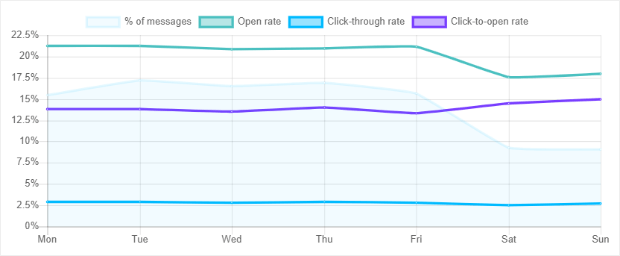
However, a study from Yes Marketing found that Saturdays are the best days for conversions:

The bottom line on email send time is this: imagine a day in the life of your particular audience. What are they doing in the morning, afternoon, and evening? What does their workday look like? How late do they stay up at night? How early do they rise in the morning?
All of these questions will help you decide on the best time to send your emails.
4. Make Your Subject Line Stand Out
When it comes to email open and click rates, your subject lines are everything. Your job is to make your subject lines stand out.
Here are some tips for crafting the best email marketing subject lines:
- Entice curiosity, but don't be too clever. You want to make them curious enough to open and click, but without being so cryptic that the subscriber hasn't a clue as to what you're talking about.
- Include numbers. There is something about numbers that draw the eye.
- Use a friendly and conversational tone.
- Speak in the language and style that your subscribers use themselves, especially when talking with their friends.
For some great subject line examples, we've written a whole post on the best converting email subject lines.
5. Write to Just One Person
When you draft your subject line and message content, it's natural to think of the thousands of people who are about to receive it.
However, it's far more effective to write as if speaking to an individual person, with a personal subject line and a personalized message.
To write this way, you'll have to really know your buyer persona. You need to understand their problems, their desires, their values, their likes, and their dislikes.
If you are having trouble with this, send out an email asking for a quick five-minute chat. On the call, you can ask questions that will help you understand what your subscribers' needs are, and how they think.
Spending a day or two talking with your subscribers will be time well spent because it will help you so much: not only with your messaging but also with creating or improving your products and services.
6. Write Like a Friend
When writing your emails, put your corporate hat to the side and write like a friend. This is the only way to really appeal to your subscribers and get them to open and click your emails.
For example, a corporate phrase like, "We're offering savings to our customers!" comes off as distant and stuffy.
A more friendly alternative could be something like, "you've gotta check out this deal…"
That makes the email seem a whole lot more personal and makes it less likely that your recipients will simply delete your message and move on.
Remember: in this age of information, everyone is looking for a reason to ignore your emails. They aren't looking for a reason to read them. But if you appeal to them on a personal level, you'll stand a better chance of getting that email opened.
7. Write Amazing Content, Every Time
You may be thinking that when a subscriber opens your email, you've essentially won the battle. However, the actual content of your email also plays an important role in your open rate.
Here's why: if your subscribers are happy with your content, they are more likely to open your emails in the future. They may even begin to eagerly anticipate your emails. Conversely, if a subscriber is displeased with what they got in your email, they probably aren't going to open your emails again, and they may even unsubscribe.
So how do you make sure your subscribers are happy with your email content? Simple: make it awesome.
Link to incredibly valuable resources, like a free eBook, an epic blog post, or a webinar.
The key is to make sure that you aren't sending emails just to send emails. Every single time you email your list, you need to deliver something of real value. The higher the value of every email you write, the more loyal your subscribers will become, and your open rates will increase.
8. Inject Some Humor
Humor has a way of making a strong, instant connection with people. It's personal, entertaining, and sticks out in peoples' minds.
But what if you aren't a very funny person? It's not always easy to be clever or humorous, and trying to fit your attempt into the narrow constraints of an email subject line? That can be super tricky.
Thankfully, you don't have to be a comedian in order to pull off a humorous email. It's more important to really know your recipients and what they'll respond to. If you know their likes and dislikes, it will be so much easier to pull off a joke or make a tongue-in-cheek comment.
Here's an example of a funny email that gets sent to subscribers who have been inactive for a while.
Hey [first name], I tried to contact you regarding [value proposition] and haven't heard back. Let me know if:
- You're all set and I should stop bothering you.
- You're interested but just haven't responded yet.
- I should follow up in three months.
- You're being chased by a hippo and need me to call Animal Control.

You can also insert funny animated GIFs into your emails, or a funny video. Again, you don't need to be a comedian to add humor and personality into your emails, you just need to think outside the box.
9. Optimize for Mobile
Mobile email accounts for 67% of all email opens, depending on your target audience, product, and email type.
You simply can't afford to ignore your mobile users, you have to appeal to them through mobile optimization best practices.
Make sure your email is responsive and includes easily loadable media. Also consider the fact that mobile screens are smaller, so long subject lines may get cut off on mobile devices.
Here are some more best email marketing tips for appealing to mobile users:
- Keep the formatting simple (single-column), under 600px wide.
- Use a larger font. Small fonts are difficult to read on mobile.
- Don't assume images are being displayed (Android turns images off by default). Make sure it looks good without them.
- Use smaller images to reduce load time.
- Use a large call-to-action button. Larger buttons are easier to tap with a thumb.
- Don't place two links next to, or on top of one another. That way, the user won't tap the wrong one by accident.
All of these marketing tips can help any campaign get better open rates, but don't get discouraged if you don't see a turnaround right away.
Email marketing is an art and science, so give yourself some wiggle room to experiment and find what tactics work best for your business and your subscribers.
If you need more help with increasing your email open rates, check out our tricks for writing better emails.
Automating Your Email Marketing with Autoresponders
Congratulations on making it to the 5th and final section of this definitive guide! You've come a long way.
If you've been following along from the beginning, you have now learned how to grow your email list to epic proportions, you've segmented your list so that your emails are highly relevant to each individual subscriber, and you've learned how to send amazingly effective emails that have a high open-rate. Now you are ready to automate the process and turn your campaigns into money-making machines!
The autoresponder series is arguably an online marketer's most powerful tool for making sales. It helps you to successfully engage your email list, build relationships, and turn prospects into buyers.
The best part is, once you've created it, your work is done, so you can focus on the important aspects of your business.
So, what is an Autoresponder?
An autoresponder is a sequence of emails that are automatically sent to a segment of people on your email list and is triggered by a specific event, such as joining your list, a certain browsing behavior, cart abandonment, downloading a PDF, or buying a product.
The content of an email autoresponder series is created in advance and set up to send at the appropriate time with the help of your email marketing software.
Every online business needs an autoresponder series for two main reasons:
1. They nurture your leads by providing valuable information and insights, as well as teaching them how to make better decisions through an automated onboarding process.
2. They turn prospects into customers by helping you build "know, like, and trust" before you ask for the sale. Then you can make your pitch at the best possible moment, and you can do it without being overly "salesy" or pushy.
So, how do you create a highly effective autoresponder series? There are 4 basic steps:
Step 1: Choose a Goal for Your Autoresponder
There are many different goals you could have for your autoresponder, but here are the 4 most common. Choose one (or a combination) of the below goals for your autoresponder series before you create it.
- Send new subscribers a "welcome" sequence. This is the message that you send to people right after they subscribe to your email list. It could contain a link to your lead magnet for an easy download, a thank you for subscribing, or maybe a call-to-action to check out your most popular blog posts. Every email list needs a welcome email series: don't miss this chance to "woo" your new subscribers and turn them into loyal fans. Check out How to Create a Welcome Email Series that Sells On OptinMonster University to learn how to create a welcome email series from start to finish!
- Use it as a lead magnet/free mini-course. You can also use an autoresponder as a lead magnet to attract new subscribers to your email list. This is commonly done in the form of a free "mini-course", or a free "challenge", which promises to deliver a series of emails containing lessons (or other valuable information) over the course of several days or weeks. There is high perceived value with a mini-course or a challenge like this, which makes it a very effective lead magnet. Looking for the best LMS plugin for WordPress to deliver your course with tearing your hair out?
- Make sales on autopilot. Creating a sales funnel out of an email autoresponder sequence is a widely adopted strategy used by information marketers, but it can also be used by software companies, eCommerce businesses, and service providers. For example, it could consist of a series of educational videos, a sales video, and follow-ups to sell your information products. Or, you could create a sequence of free educational emails, and then invite leads to a live or recorded webinar where you make an offer. For an online store, your sales sequence could include promo offers for products your subscriber has just viewed on your website.
- Promote up-sells/cross-sells. You can even set up an autoresponder sequence for someone after they purchase and get repeat customers. Depending on the products you sell, you could offer an upsell, or cross-sell related products. For example, if someone buys a digital camera, you can offer to add a lens, a tripod, and other accessories to their order before it ships. Or, if you sell products that people buy frequently (like food or disposable items, like diapers), you can automatically send them offers for new items when you know they're about due for another order.
Step 2: Map Out Your Entire Email Sequence
In this step, you will draft an outline for your sequence. But first, you'll need to figure out how long you want your sequence to be. How many days? How many emails?
There is no universal rule when it comes to exactly how many emails you need to have in your email sequence. Your sequence should be long enough to help you accomplish your goals, no more, no less. So its length should be determined by its purpose, your segments, subscriber's preferences, etc.
Next, you'll need to figure out how far apart each email will get sent.
It's okay to send an email once every two days for educational emails, and three to four emails in a single day when you're running a huge sale that's about to end. It depends entirely on the goal for your sequence (which is why you chose that in Step 1).
You need to find a healthy balance between your "value" emails and your "offer" (sales) email.
The exact number of emails you send doesn't matter as long as you send more value emails than sales emails. This helps you keep your list from getting burnt out.
To simplify things, you can use the 80/20 rule: 80% of your emails should give value, while only 20% of your emails are about making a sale.
Next, write an outline of your sequence from start to finish, describing what topic(s) each email will cover and the call-to-action for each email. Your call-to-action could be to click on a link, share your blog post on social media, reply to your email, or buy your product.
Here's an example of a sequence for launching an information product:
Email 1: Introduction and saying thanks for subscribing.
Email 2: Explain why the specific topic/problem matters. This helps build the demand for your product.
Email 3: Explain what you need to do to solve the specific problem/accomplish a certain goal. This builds credibility, and you start helping people in advance.
Email 4: Explain how exactly to solve the problem in more detail. Transition to the sale and mention you're launching a new product/program in a few days.
Email 5: Launch your product. Tell your list that your product is live and can be purchased in the next few days. After that, you will close your cart and it won't be available.
Email 6: Remind your subscribers about the product. Share how many people bought it so far, what other people think about it and how many seats are left.
Email 7: Last day before closing, first email. Tell your subscribers that there are 24 hours left and your product won't be available after that. Remind them what they're going to learn in your program and what the benefits are.
Email 8: Last day before closing, second email. Transition more into scarcity and that there are only a few hours left. After that, your product won't be available.
Email 9: Two hours before closing. This is where you go full scarcity and focus on the change people want to make in their lives. How much do they really want to solve their problems/accomplish their goals?
Email 10: Cart closed. Send an email to explain to users the product is no longer available. Share figures about how many people got into your program. Thank everybody for their support.
Step 3: Write an Autoresponder Series that Converts
Writing the actual emails of your autoresponder series might be the hardest part of this job. You may even want to outsource it to a professional copywriter. However, if you still want to learn how to do it yourself, here's what you should keep in mind:
- Focus on the reader first. You should always write your emails to address the needs of your subscribers, not yours. Offer ways to solve their problems, don't simply talk about your products and how great they are. Ask yourself, what are the biggest pain points for my subscribers? How can I solve their current problem in this email?
- Use personalization. Personalizing the content of your emails will make it so much more relevant and valuable to them. Personalization goes beyond sticking your subscriber's first name into the email. You need to tailor the actual content of the email to address their needs. For instance, an online retailer will find it much more valuable to read an email with the subject line, "How to build backlinks to your eCommerce store" than just a generic subject line, "How to build backlinks."
- Write great subject lines. David Ogilvy once said that 80 cents of your dollar should be spent on writing headlines. With emails, the subject line is just as important. If it doesn't catch your attention, you won't open it. So, spend the majority of your time writing and polishing your subject line. A great email subject line entices curiosity about the content of the email. It's also personal, and highly relevant to the recipient.
Step 4: Monitor and Improve
Although it is mostly hands-off, an email autoresponder series is not something that you should create one day and then completely forget about the next. To get the best results, monitor the performance of your emails to identify areas that need improvement. Then, A/B test some changes in order to make those improvements.
Here's what you should pay attention to when you analyze your autoresponder campaigns:
- Open rates. If your open rates aren't where you want them, consider the following: Is this autoresponder relevant to your list? Are your subject lines as good as they can be? Are you sending your emails at the best times?
- Click through rates. Once your subscribers have opened your email, are they actually taking the action you need them to take? If you think that you have a low click-through rate, perhaps your body copy is not as effective as it needs to be. Consider the following: Is the copy of your email relevant to the subject line? Did you offer real value to your subscribers in the email? Is your call-to-action clear enough? Is the link easy to find?
- Unsubscribe rate. Unsubscribes are always going to happen no matter what, and that's usually okay because those people probably wouldn't have bought from you anyway. However, a high unsubscribe rate can indicate that you are losing potential customers. Check the following: Why did people subscribe to your list in the first place, and are you delivering on that promise? Is the content of your autoresponder highly relevant to the segment it is being sent to? Are you sending too many sales emails with too little value emails? (Recommended reading: 5 Reasons Why People Unsubscribe from Your Email List.)
Now that you can automate and target each of your email marketing campaigns, you can turn those campaigns into a sales machine!
FAQs (Frequently Asked Questions) About Email Marketing
Here are some of the most frequently asked questions about email marketing. Some of this info has been covered in this very article but is presented here for those of us who want a quick reference. ?
Keep checking back because we'll definitely be updating this FAQ.
How do I build an strategy following email marketing best practices?
This guide is a great way to build the best email marketing strategy and we encourage you to follow it! We also have a great post on how to run a successful email marketing campaign that you should definitely check out. Here's what you'll find:
- Set a goal for your email campaign
- Decide on the types of email you'll send
- Choose your audience segments
- Select the right technology
- Create eye-catching optins
- Plan emails and followups
- Craft the perfect subject line
- Write your email marketing copy
- Design your email
- Test and track your email campaign
How often should I send marketing emails?
There's no hard, fast rule when talking about how often to send marketing emails, so we recommend that you ask your subscribers how often they want to hear from you. You can also do some A/B testing to see what frequency has the best performance.
Generally, you'll want to reach out to newer subscribers more often since they're just getting to know you. But, beyond that just send out emails on the schedule you've established and no more.
When should I send marketing emails?
Timing is another one that can vary widely depending on your list. Our advice is to experiment with this and see what gives you the best results for your subscribers. You can check out Google Analytics to find out when your subscribers are most active and send your emails at that time.
What email metrics should I track?
The top 3 metrics to track for email marketing are:
- Deliverability. Your email deliverability rate is the number of emails that made it successfully to the target recipient's inbox.
- Open Rate. The open rate shows the number of recipients who opened your email.
- Click-Through Rate. The click-through rate shows the percentage of subscribers who clicked a link in your email (usually to a landing page on your website).
What is the difference between single opt-in and double opt-in?
Single opt-in means that once a visitor clicks "subscribe" they're on your list.
Double opt-in means that they click "subscribe" then have to confirm that they subscribed by clicking a link in a confirmation email or other transactional email sent to the email address they provided.
For more info and tips, see our guide on double opt-in vs. single opt-in: which is better for conversions?
Should I be sending email newsletters?
Absolutely! More than 83% of business-to-business (B2B) marketers send email newsletters as part of their content marketing strategy. Email marketing is a very cost-effective way for brands to communicate with their customers and email newsletters are an essential piece of any email marketing strategy.
Learn how to create an email newsletter with our massive guide.
Are there email marketing best practices for list building?
Yes! You can find our best practices for building your email list here.
Wrapping Up
We hope this guide has helped you learn how to create an effective email marketing campaign.
In this guide, we shared the following items in detail:
- The Importance of Email Marketing
- How to Get Started
- Growing Your Email List
- How to Create an Optin Form That Converts
- Choosing The Best Email Marketing Service
- Segmenting Your Email List
- Improving Your Email Open and Click Rates
- Automation with Autoresponders
As you are building your email list, make sure that you are using these 14 high converting places to add email signup forms. And make sure to keep your email copy on point to engage subscribers and keep them reading.
Pressed for time? No worries. Check out these white label email marketing tools that you can use to improve your strategy today!
If you like this definitive guide, you'll LOVE OptinMonster University. Check it out. It's FREE for OptinMonster customers!
And if you're ready to grow your email list right away, sign up for your risk-free OptinMonster account!
BONUS: Done-For-You Campaign Setup ($297 value) Our conversion experts will design 1 free campaign for you to get maximum results – absolutely FREE! Click here to get started →
Source: https://optinmonster.com/beginners-guide-to-email-marketing/
0 Response to "How to Make Easy Money Email Marketing Quick Your Minimum Wage"
Post a Comment